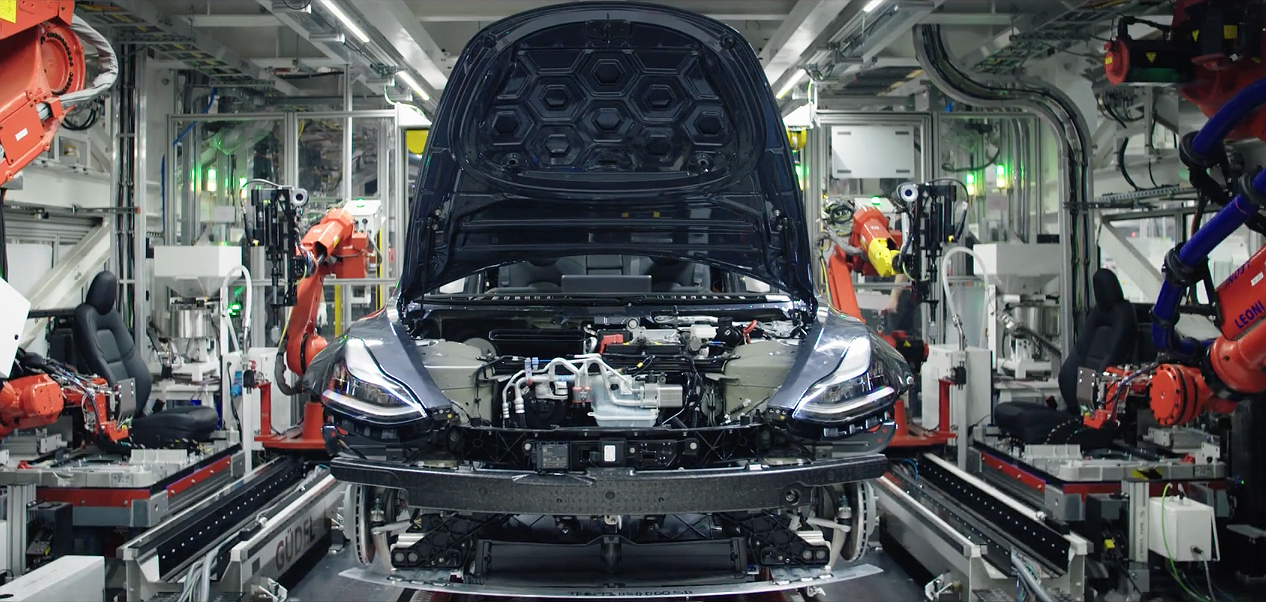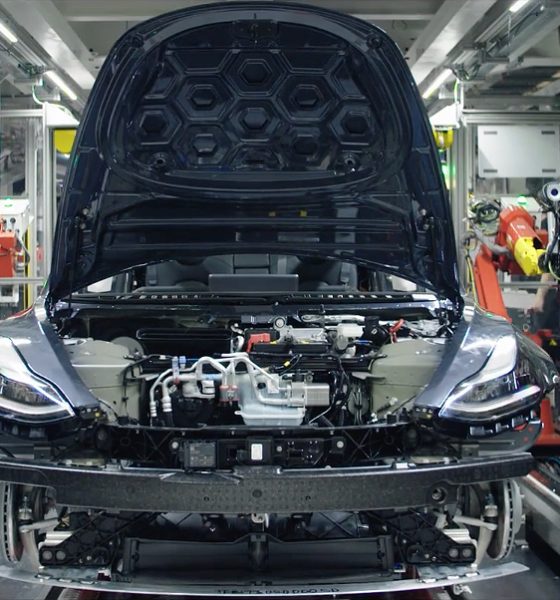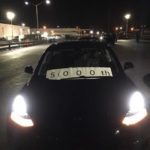

Investor's Corner
Tesla registers 6,100 new Model 3 VINs amid continued production push
Tesla has registered 6,160 new Model 3 VINs, amid the company’s continued production ramp for the compact electric car. With the latest batch of new vehicle identification numbers, Tesla has filed a total of 62,557 Model 3 to date.
The recent registrations were shared on Twitter by @Model3VINs, a group that tracks Tesla’s filings for the vehicle. According to the group, the latest batch of Model 3 VINs comprised of Long Range RWD cars — a stark contrast to the 2,237 vehicle identification numbers registered by the company last week, which were largely dual motor AWD.
#Tesla registered 6,160 new #Model3 VINs. Highest VIN is 62557. https://t.co/qZjb57aSMM
— Model 3 VINs (@Model3VINs) July 1, 2018
Tesla’s VIN registrations for the Model 3 had seen a meteoric rise since May, when the electric car and energy company started filing large batches of the vehicle identification numbers. In May, for example, Tesla registered more than 17,900 new Model 3 VINs — a figure that took the company until March 23 to accomplish since starting the car’s production last July 2017.
Particularly impressive this past June, however, were VIN batches that corresponded to filings for the dual motor AWD variant of the compact electric car. Earlier this year, Elon Musk announced on Twitter that Tesla would probably start production of the dual motor AWD and Performance Model 3 sometime in July, when the company has attained a steady production rate of 5,000 Model 3 per week. Midway through last month, however, Musk revealed on Twitter that the first Model 3 Performance has rolled off from a newly-built assembly line, which was set up in a sprung structure on the grounds of the Fremont factory.
The latest Model 3 VIN registrations come amid Tesla’s announcement that it has effectively hit a production rate of 5,000 Model 3 per week. The milestone, which has eluded Tesla since the vehicle started production last year, was teased over the last few weeks of June. In the weeks leading up to the end of Q2 2018, for one, sightings of overflow lots filled with Model 3 were shared by Tesla enthusiasts online. Tweets from workers at Fremont and Gigafactory 1 also teased that the company would hit its target by the end of the quarter.
- [Credit: Tesla Daily/Twitter]
- [Credit: The Tesla Life/Twitter]
Even before Elon Musk confirmed the news on Twitter, social media posts from the company’s workers in Fremont teased that the 5,000-a-week Model 3 target had been achieved. Among these was a photograph of a banner being signed by workers at the Fremont factory with the words “Model 3 5K Club” on it. Pictures of workers celebrating at the factory grounds and a Model 3 labeled as “5000th” also made the rounds in social media. Not long after this, Elon Musk himself congratulated the Tesla team on Twitter for producing 7,000 vehicles in one week. A leaked email from Musk later specified that the 7,000-vehicle output was comprised of 5,000 Model 3 and 2,000 Model S and Model X.
7000 cars, 7 days
♥️ Tesla Team ♥️— Elon Musk (@elonmusk) July 1, 2018
The announcement of Tesla’s production milestone for the Model 3 appears to have provided a boost to investors’ sentiments. As of writing, Tesla shares (NASDAQ:TSLA) are trading up 6.28% during pre-market, at $365.44 per share.

Investor's Corner
Tesla stock closes at all-time high on heels of Robotaxi progress

Tesla stock (NASDAQ: TSLA) closed at an all-time high on Tuesday, jumping over 3 percent during the day and finishing at $489.88.
The price beats the previous record close, which was $479.86.
Shares have had a crazy year, dipping more than 40 percent from the start of the year. The stock then started to recover once again around late April, when its price started to climb back up from the low $200 level.
This week, Tesla started to climb toward its highest levels ever, as it was revealed on Sunday that the company was testing driverless Robotaxis in Austin. The spike in value pushed the company’s valuation to $1.63 trillion.
Tesla Robotaxi goes driverless as Musk confirms Safety Monitor removal testing
It is the seventh-most valuable company on the market currently, trailing Nvidia, Apple, Alphabet (Google), Microsoft, Amazon, and Meta.
Shares closed up $14.57 today, up over 3 percent.
The stock has gone through a lot this year, as previously mentioned. Shares tumbled in Q1 due to CEO Elon Musk’s involvement with the Department of Government Efficiency (DOGE), which pulled his attention away from his companies and left a major overhang on their valuations.
However, things started to rebound halfway through the year, and as the government started to phase out the $7,500 tax credit, demand spiked as consumers tried to take advantage of it.
Q3 deliveries were the highest in company history, and Tesla responded to the loss of the tax credit with the launch of the Model 3 and Model Y Standard.
Additionally, analysts have announced high expectations this week for the company on Wall Street as Robotaxi continues to be the focus. With autonomy within Tesla’s sights, things are moving in the direction of Robotaxi being a major catalyst for growth on the Street in the coming year.
Elon Musk
Tesla needs to come through on this one Robotaxi metric, analyst says
“We think the key focus from here will be how fast Tesla can scale driverless operations (including if Tesla’s approach to software/hardware allows it to scale significantly faster than competitors, as the company has argued), and on profitability.”

Tesla needs to come through on this one Robotaxi metric, Mark Delaney of Goldman Sachs says.
Tesla is in the process of rolling out its Robotaxi platform to areas outside of Austin and the California Bay Area. It has plans to launch in five additional cities, including Houston, Dallas, Miami, Las Vegas, and Phoenix.
However, the company’s expansion is not what the focus needs to be, according to Delaney. It’s the speed of deployment.
The analyst said:
“We think the key focus from here will be how fast Tesla can scale driverless operations (including if Tesla’s approach to software/hardware allows it to scale significantly faster than competitors, as the company has argued), and on profitability.”
Profitability will come as the Robotaxi fleet expands. Making that money will be dependent on when Tesla can initiate rides in more areas, giving more customers access to the program.
There are some additional things that the company needs to make happen ahead of the major Robotaxi expansion, one of those things is launching driverless rides in Austin, the first city in which it launched the program.
This week, Tesla started testing driverless Robotaxi rides in Austin, as two different Model Y units were spotted with no occupants, a huge step in the company’s plans for the ride-sharing platform.
Tesla Robotaxi goes driverless as Musk confirms Safety Monitor removal testing
CEO Elon Musk has been hoping to remove Safety Monitors from Robotaxis in Austin for several months, first mentioning the plan to have them out by the end of 2025 in September. He confirmed on Sunday that Tesla had officially removed vehicle occupants and started testing truly unsupervised rides.
Although Safety Monitors in Austin have been sitting in the passenger’s seat, they have still had the ability to override things in case of an emergency. After all, the ultimate goal was safety and avoiding any accidents or injuries.
Goldman Sachs reiterated its ‘Neutral’ rating and its $400 price target. Delaney said, “Tesla is making progress with its autonomous technology,” and recent developments make it evident that this is true.
Investor's Corner
Tesla gets bold Robotaxi prediction from Wall Street firm
Last week, Andrew Percoco took over Tesla analysis for Morgan Stanley from Adam Jonas, who covered the stock for years. Percoco seems to be less optimistic and bullish on Tesla shares, while still being fair and balanced in his analysis.

Tesla (NASDAQ: TSLA) received a bold Robotaxi prediction from Morgan Stanley, which anticipates a dramatic increase in the size of the company’s autonomous ride-hailing suite in the coming years.
Last week, Andrew Percoco took over Tesla analysis for Morgan Stanley from Adam Jonas, who covered the stock for years. Percoco seems to be less optimistic and bullish on Tesla shares, while still being fair and balanced in his analysis.
Percoco dug into the Robotaxi fleet and its expansion in the coming years in his latest note, released on Tuesday. The firm expects Tesla to increase the Robotaxi fleet size to 1,000 vehicles in 2026. However, that’s small-scale compared to what they expect from Tesla in a decade.
Tesla expands Robotaxi app access once again, this time on a global scale
By 2035, Morgan Stanley believes there will be one million Robotaxis on the road across multiple cities, a major jump and a considerable fleet size. We assume this means the fleet of vehicles Tesla will operate internally, and not including passenger-owned vehicles that could be added through software updates.
He also listed three specific catalysts that investors should pay attention to, as these will represent the company being on track to achieve its Robotaxi dreams:
- Opening Robotaxi to the public without a Safety Monitor. Timing is unclear, but it appears that Tesla is getting closer by the day.
- Improvement in safety metrics without the Safety Monitor. Tesla’s ability to improve its safety metrics as it scales miles driven without the Safety Monitor is imperative as it looks to scale in new states and cities in 2026.
- Cybercab start of production, targeted for April 2026. Tesla’s Cybercab is a purpose-built vehicle (no steering wheel or pedals, only two seats) that is expected to be produced through its state-of-the-art unboxed manufacturing process, offering further cost reductions and thus accelerating adoption over time.
Robotaxi stands to be one of Tesla’s most significant revenue contributors, especially as the company plans to continue expanding its ride-hailing service across the world in the coming years.
Its current deployment strategy is controlled and conservative to avoid any drastic and potentially program-ruining incidents.
So far, the program, which is active in Austin and the California Bay Area, has been widely successful.










